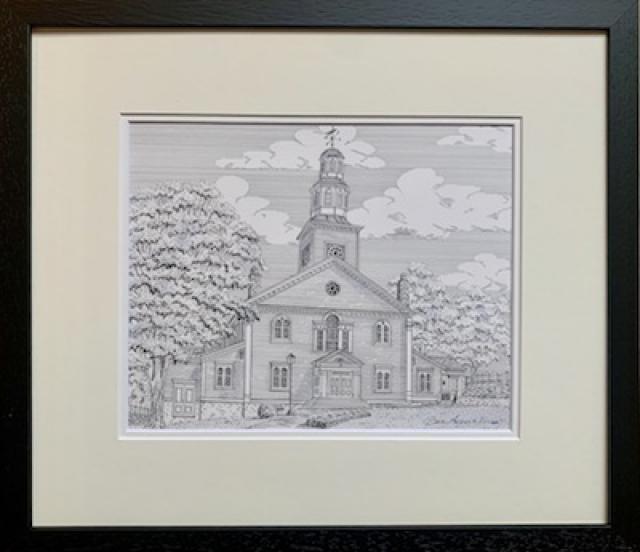
St. Pauls Church, Halifax, NS
Scroll down for historical sketch
ORIGINAL Pen & Ink Framed. 14 X 16 $395.
Plus Shipping: $50. Canada - $70. USA
Signed & Matted Limited Edition Print 8" x 10"
$20 each. (plus shipping $4.)
Add the appropriate shipping charge and submit your order by email(gale@eastlink.ca), giving us the destination postal address and your telephone number. We will respond promptly and notify you when your payment has been received and the tracking # for your parcel.
GALE accepts payment for online orders by:
1. email-transfer of funds to gale@eastlink.ca (available within Canada)
2. Visa or Mastercard. Please email or telephone (902-640-2176) with the credit card particulars.
If ordering more than one piece of artwork we will do our best to combine the packaging to obtain the best shipping rate and will advise you accordingly as to the final charge.
YOUR PATRONAGE IS MUCH APPRECIATED…THANK YOU!
St. Pauls Church, Halifax, NS
St. Paul’s Church was built in 1750 and is the oldest Protestant church in Canada. Clearly the raising of a fine church was a priority for Lord Cornwallis in his hasty settlement of Halifax. Cornwallis’ assignment was, indeed, challenging-to instantly create a counter balance to the military, civil and cultural pre-eminence of the French at Louisbourg. As was much noted at the time, the civil and cultural measure of the few thousand English colonists was pretty marginal. This Cornwallis sought an elevating remedy by copying London’s beautiful Marybone Chapel, which was, incidentally, the home church of Lord Halifax. Thus, in effect, Halifax’s St. Paul’s Church was designed by James Gibbs, the famous protégé of Sir Christopher Wren, the architect of St. martins-in-the-Field, among other world-class edifices.
Alas, however, the visual elegance of St. Paul’s in the rough new garrison town was not matched by interior comfort. The church remained basically unheated (except by the bodies of the faithful and their hounds in attendance) until the end of the 18th century. Bishop Inglis observed during his tenure that regular church attendance during the winter months could speed parishioners to an early meeting with their maker.

